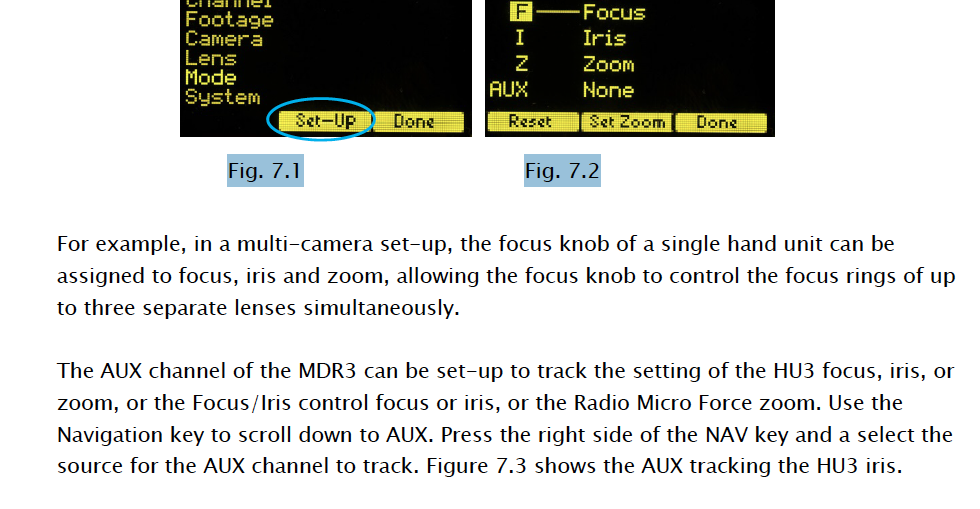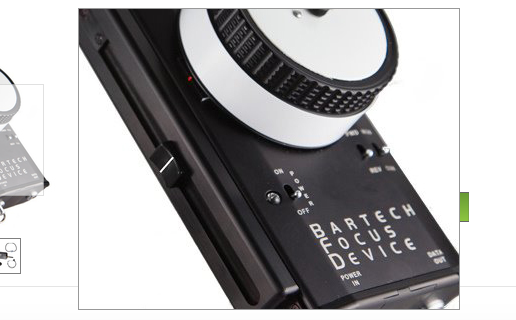
davide sorasio
Basic Member-
Posts
94 -
Joined
-
Last visited
Everything posted by davide sorasio
-
Hi everybody! I do not have experience with film cameras and I was wondering if it's possible to use a teradek and a TV Logic on the Arricam Studio. I know that it outputs a composite video signal, so I was wondering if there's a way to send an image to a director's monitor though a teradek. For the TV logic I gues it'd be enough to switch the device from sdi to composite correct? Thank you in advance for the help!
-
Hi everybody! From my general understanding usually for 35mm lenses the sweet spot of the lens is usually 2 stops down from the widest aperture. I wanted to know if anamorphic lenses have the same features or where the sweet spot of the lens usually is. Thanks in advance!
- 1 reply
-
- 1
-

-
- anamorphic
- lens
-
(and 1 more)
Tagged with:
-
thanks! I have some more questions, so at this point what is the difference between RGB 422 and YCrCb 422?, and between RGB 444 and YCrCb 444? And why are you saying that "If we use RGB, we must store all three channels at full resolution"?
- 5 replies
-
- color sampling
- rgb
-
(and 2 more)
Tagged with:
-
Hi everybody, I'm reading about color sampling and I'm getting a lil confused about the difference between RGB and YCbCr. From what I've understood they are both color spaces, but YCbCr comes handy because full bandwidth RGB signals have a lot of color redundancy and they are not economically efficient for storage and transmission. One of the things I do not undestand is when in cameras happens the passage from RGB to YCbCr. For example, if I'm shooting with a high end level camera like Alexa or Epic what is the color space? And if I have a chence to choose between the two which one should I choose? And another thing, I've seen that in high end level monitors there is a hdsdi input but also different inputs for YCbCr signals, whit differents connectors for the different color components. why is that? Thanks so much in advance for the help, Davide
- 5 replies
-
- color sampling
- rgb
-
(and 2 more)
Tagged with:
-
Thanks a lot! one last doubt I still have after reading the Preston FIZ manual, I do not really understand what the AUX channel in the mode menu is made for. I'm attaching here the screenshot of the page manual because I really cannot figure this out! In the next page it also tells me that : "The second function of Custom Mode is to turn off one or more of the HU3 control channels focus, iris, zoom or auxiliary. This is useful when using the HU3 in combination with the Focus/Iris or Radio Microforce single channel units. Turning off the HU3 channel will prevent the motor from changing from the setting of the single channel hand unit to the setting of the HU3 if the signal from the single channel unit is lost. Figure 7.4 shows the HU3 zoom channel set to Off, so if the signal from the Radio Micro Force is lost, the motor will not revert back to the zoom setting of the HU3. In situations where the lens setting must be controlled only by the single function hand unit and not the HU3, the corresponding HU3 channel should be set to “Off”. Zoom Mode" Thanks so much in advance for the help!
- 6 replies
-
- remote follow focus
- pulling
-
(and 3 more)
Tagged with:
-
thank you all! What still confuses me is, how can I delegate the iris function to a second unit? Let say I one hand unit for focus, and I want the DP to control the aperture during a shot. I need 2 different hands, but how are they in relationship with each other? Do I need only one motor driver for the preston for example? And how do I make sure each hand controls only one thing? Also I know with the PRESTON FIZ I can use two different hands (The question above still exists BTW), but if I wanted to use a bartek for example, should production rent 2 different hands, motors and receivers etc and run thme independently? Sorry for the obvious question but I've only worked with the need for pulling focus with BARTEK and EDEN KARAT wireless follow focus. If anybody could also give a maybe more analitical explanation of how I could make it happpen it'd be great. Thanks so much in adavance
- 6 replies
-
- remote follow focus
- pulling
-
(and 3 more)
Tagged with:
-
Hi everybody, I'm reading David Stump's digital cinematography manual and I need a couple of clarification. Is BAYER FILTER ARRAY (or any other color filter mosaic) used in both RAW or RGB signal output cameras? And does it have something to do with it or that's just a way that the sensor read the lights and it's independent from the file format? It's kind of confusing to me because I wonder if the Bayer CFA is used only when shooting raw or if it's just a system that is independent from the FILE FORMAT. Thanks in advance for the help!
-
Hi everybody. I was wondering if anybody could give some advise on where I'd be good to apply for internships/entry level prep technician in NYC. I know Abel, Arri CSC, Adorama but I wanted to know if you know any other smaller/worth applying ones. Google is not being super helpful! Thanks so much, Davide
- 2 replies
-
- rental house
- internships
-
(and 1 more)
Tagged with:
-
Hi everybody, I was wondering how people control the aperture and pull focus during a steadycam shot for example. Is it possible through only one remote? Or I'd be necessary to do so with 2 different motors and and remotes? Thank you in advance for the help, Davide
- 6 replies
-
- remote follow focus
- pulling
-
(and 3 more)
Tagged with:
-
PAR focal lenses, what are them?
davide sorasio replied to davide sorasio's topic in Camera Assistant / DIT & Gear
thanks so much! one last thing, what's the difference bewteen zooms and variable focal lenght lenses? -
Hi everybody, can anybody give a little insight on what parfocal lenses are? Thanks so much in advance, Davide
-
Hello everybody, I'm reading more about camera sensor and I've read that 3chip CCD sensors have a dichroich prism system that break the light in different color wavelenght etc etc. my big question is does a Interline Transfer CCD sensor (that I've read being a 1 chip sensor) have a dichroic prism or that is true only for a CCD 3chip 2/3 inch sensor? Thanks so much in advance for the help
- 4 replies
-
- ccd sensorprism
- interline transfer
-
(and 1 more)
Tagged with:
-
Diopters and depth of field
davide sorasio replied to christian mann's topic in Camera Assistant / DIT & Gear
sorry but I cannot make the formula work, maybe I'm wrong but after doing the math it would come to 0.5/ 1.5 that comes to 0.33, I do not see how you got to 0.16 meters at the end. -
Hey everybody, I've seen that in all TV logic focus assist menu there is an option that says "focus assist level", with the possibility of dealing numbers (in % as measuring unit) that I can see change the sensitivity of the device. I was wondering how should the level be changed according to the scene brightness for example. I've realized most times the device reads everything like if it was in focus when clearly it is not and I was wondering if anybody had tips/workflow to share on how regulate and use the focus assist function in the best way to take advantage of it because most times I find it misleading more than helpful! Thanks in advance, Davide
-
Hi everybody. I have a couple questions on the zebra features of digital cameras. I know it's a feature that helps you seeing which part of the frame correspond to a certain IRE level. What I'd like to know is which level of IRE should the zebra set to. I know it is a customizable feature but I'd like to know generally what should the zebra level set to. Which IRE value corrspond to over exposed to a point of loosing info? And why is there an option to set 2 zebras at the same time?Is it because it's common to set it for a high value of IRE and a low value at the same time in order to check over and under exposure at the same time? Thanks so much in advance for the help!
-
so gamut is more related to the physical capabilities of the monitor (or device) while bit depth is more connected to the potentialities, is that correct? And if it is might it be possible that the bit rate overpass the capabilities of the dispay's gamut? And how is gamut measured? And what is the point of shooting with a 12 bit depth if then the content might be screened on a normal tv or pc monitor? Does it have something to do with color correction?
-
Hi everybody, I'm wondering if anybody has some advise on how an AC resume should look like. Should I put my education and formative experiences? Should I only put the filmography and only the more importants jobs or should I put students films too? Any other advise is more than welcome! Thanks in advance!



